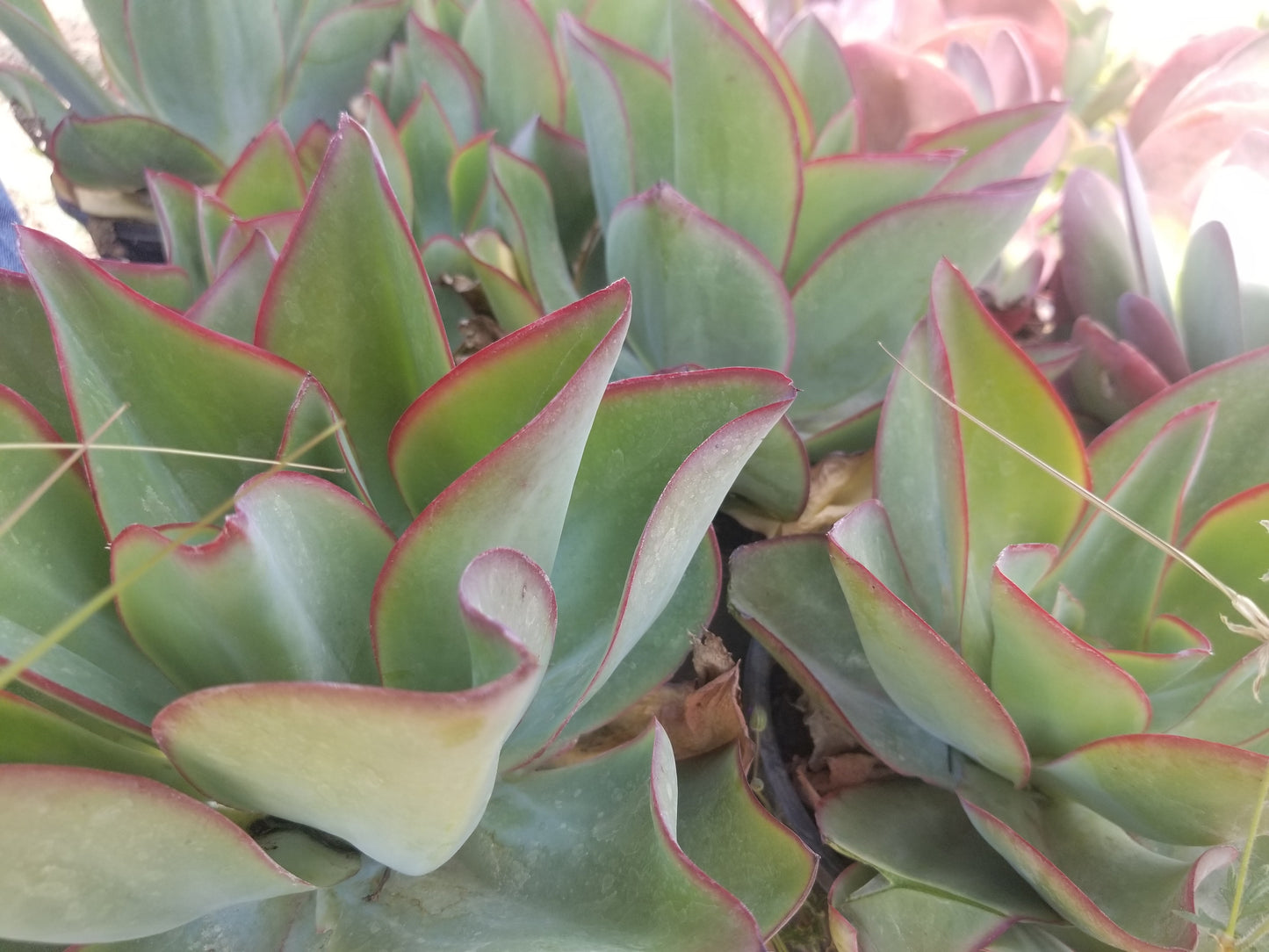Beautiful Desert plants
Echeveria Subrigida "Fire and Ice"
Couldn't load pickup availability
Echeveria Subrigida
* Ship Bare root (without pot and soil) Pot size is only notated for your reference.
* If you are going plant your cactus or succulent in a pot, have it prepared beforehand with cactus mix soil (recommended), then water lightly.
*If you going to plant it into the ground, ensure proper drainage
*We Only ship Priority to ensure your Succulents plant will take between 2 to 3 days to arrive, we are not responsible for any the shipping carriers are delays.
* My Jades have really short roots, We reefed to the gallons that are planted in the add so you can see or estimate the actual size of the plant, do not expect to receive any Jade with long roots, That's why these trees are easy to Trim and give a shape as a bonsai tree and plant them in a shallow pot.
* We try to ship our succulent plants as soon as we get the order is customer responsibility to be aware of the plant arrival also customers will get a notification by email. If the customer wants to delay or change the day of the shipment please contact us as soon as possible.
*We take great care in the packaging of your plants, but unfortunately the same cannot always be said in how they are handled once they leave us
.*Is the customer responsibility to purchase a (Heat pack) if the Succulent plant is ship to a cold area, we usually recommended it if the whether is 35* or lower, If you are purchasing a large succulent plant please make sure you buy enough heat pack to cover the plant (1 heat pack every 12") We are not responsible for damages to the Succulent plant if is NOT enough coverage of the heat pack, and if is delay by USPS, the heat only will keep the box warm for 72 hours.
|
||||||||||||||||||
| Echeveria subrigida 'Fire and Ice' - This is a named selection of the very attractive large rosette-forming Echeveria subrigida. The difference between the selection 'Fire and Ice' is not readily apparent and our description here is for the species which is one of the largest of the Echeveria. It forms 9 inch tall by 18 inch wide rosettes of wide spade-shape blue-green leaves that are deeply channeled and have smooth margins that often are highlighted with pink or rose tones. In late spring into mid-summer appear the heavy upright stalks bearing coral-pink flowers that are orange inside with red nectaries. Plant in a very well-drained soil in full coastal sun to light shade - requires shade inland but make sure it is a bright location to maintain best color and discourage the stem for stretching out. Give occasional to infrequent irrigation spring through fall and try to keep on the dry side in winter – great under a eave. Cold hardy to about 20° F. This plant has proven a bit difficult to maintain. It has been suggested that planting at a slight angle to promote water running away from the center of the rosette in a very well drained soil, avoiding winter water, acidifying of strongly alkaline water and the use of a fertilizer for acid loving plants, can help maintain a nice looking plant. Echeveria subrigida comes from San Luis Potosi, & Tultenango Canyon, Mexico though for many years the plant now known as Echeveria cante, from the mountains of Zacatecas, was marketed under this name. E. cante is slightly smaller and has leaves with a thick powdery whitish lavender coating and yellow orange flowers lacking the red nectaries. The genus Echeveria was named to honor Mexican botanical artist Atanasio Echeverría y Godoy in 1828 by the French botanist Augustin Pyramus de Candolle (DeCandolle) who was very impressed with Echeverría's drawings. Echeverría had accompanied the the Sessé and Mociño expedition (led by Martin de Sessé y Lacasta and Mariano Mociño Suárez de Figueroa) while exploring Mexico and northern Central America and had produced thousands of botanical illustrations. The genus Echeveria is a member of the large Crassula family (Crassulaceae), which has about 1,400 species in 33 genera with worldwide distribution. Echeveria, with approximately 180 species, are native to mid to higher elevations in the Americas with the main distribution in Mexico and central America but with one species found from as far north as southern Texas and several species occurring as far south as Bolivia, Peru and possibly Argentina. The book "The genus Echeveria" by John Pilbeam (published by the British Cactus and Succulent Society, 2008) is an excellent source of information on the species and "Echeveria Cultivars" by Lorraine Schulz and Attila Kapitany (Schulz Publishing, 2005) has beautiful photos and great information on the cultivars and hybrids. It has been argued by some that the correct pronunciation for the genus is ek-e-ve'-ri-a, though ech-e-ver'-i-a seems in more prevalent use in the US. The Information displayed on this page about Echeveria subrigida 'Fire and Ice' is is based on the research conducted about this plant in our library and from reliable online resources. We also note those observations we have made of it as it grows in the nursery's garden and in other gardens, as well how crops have performed out in our nursery fields. We will incorporate comments that we receive from others and welcome to hear from anyone who may have additional information, particularly if they can share with us any cultural information that would aid others in growing it. |
Share






Subscribe to our emails
Be the first to know about new collections and exclusive offers.






